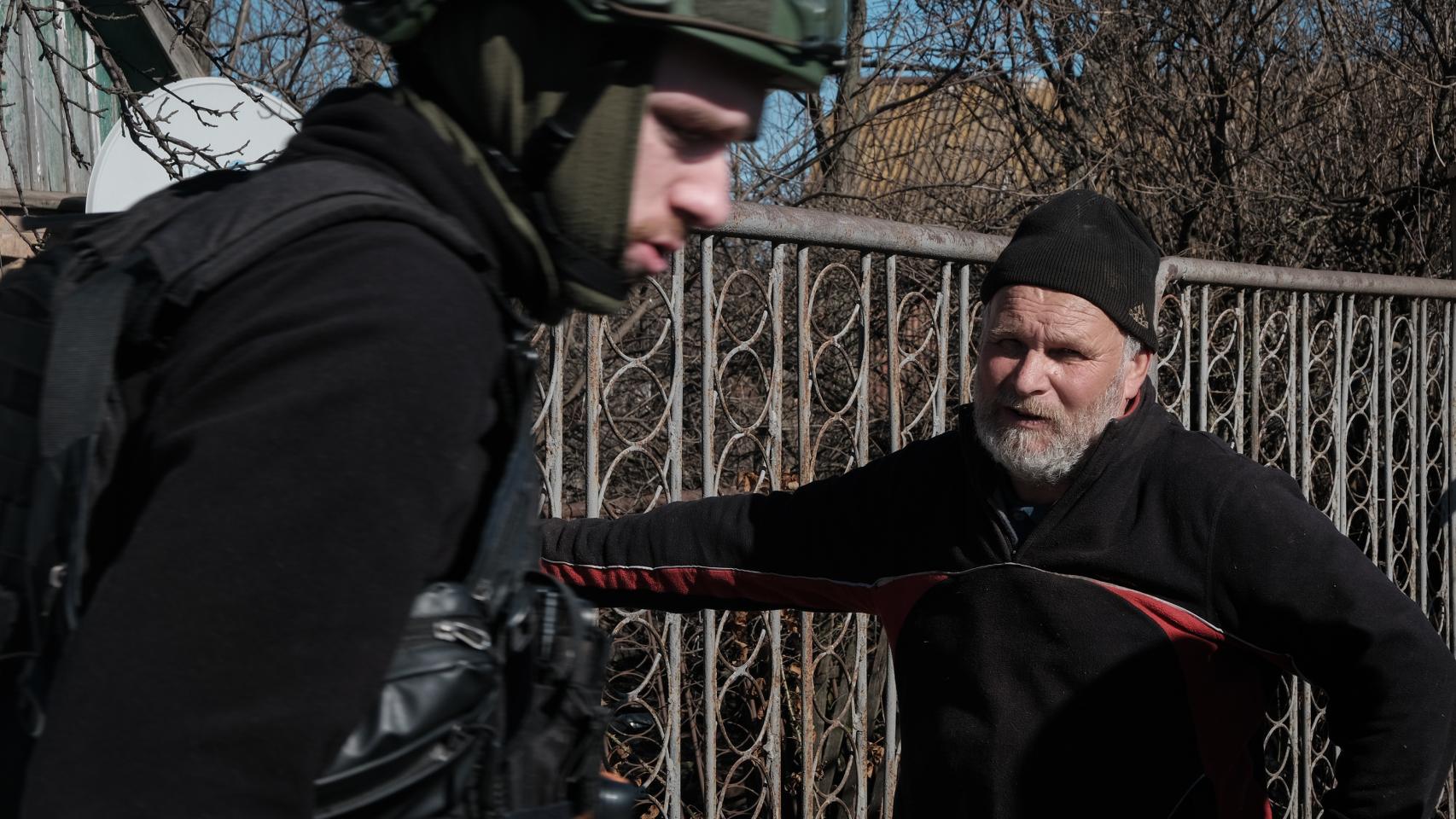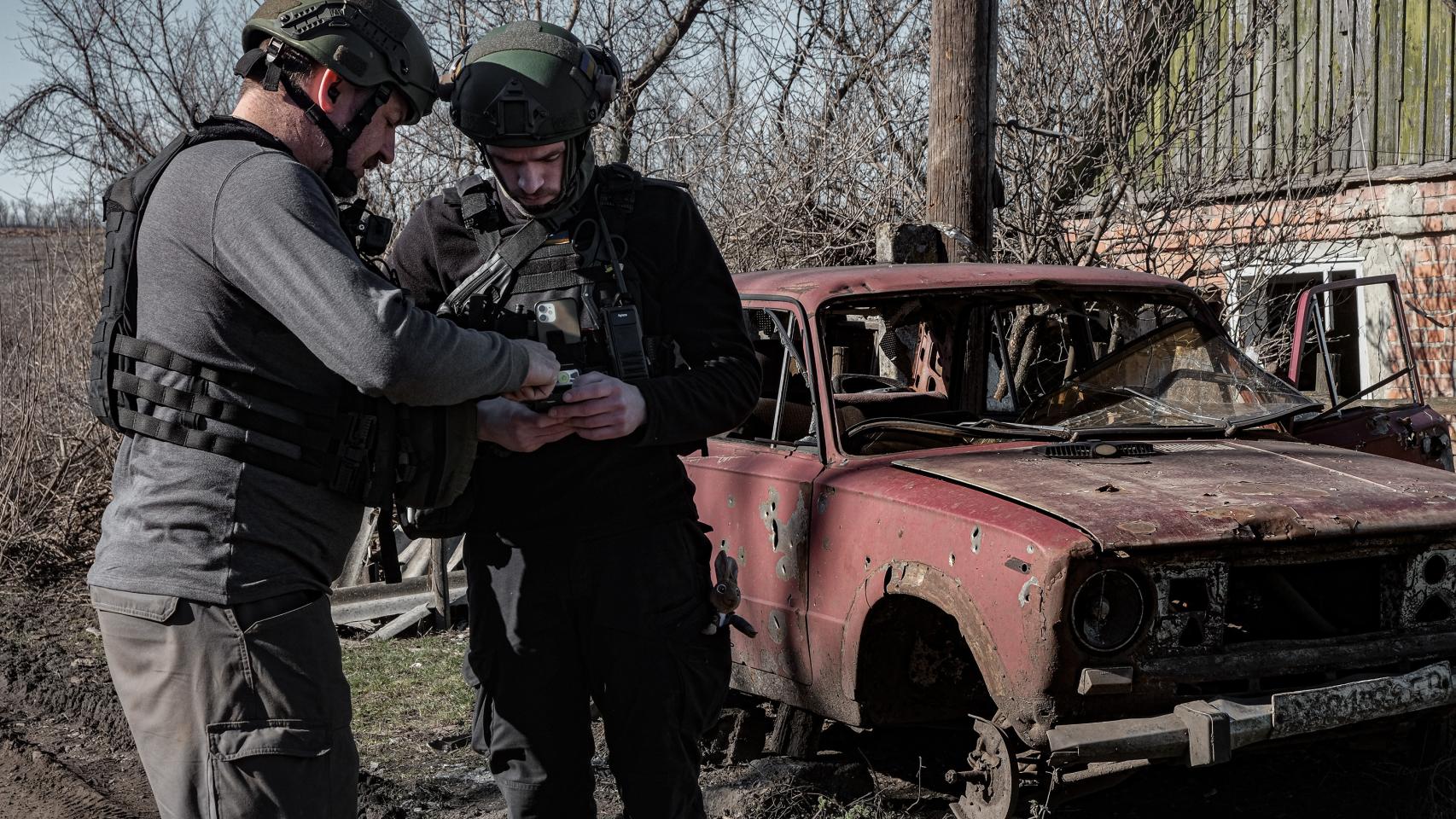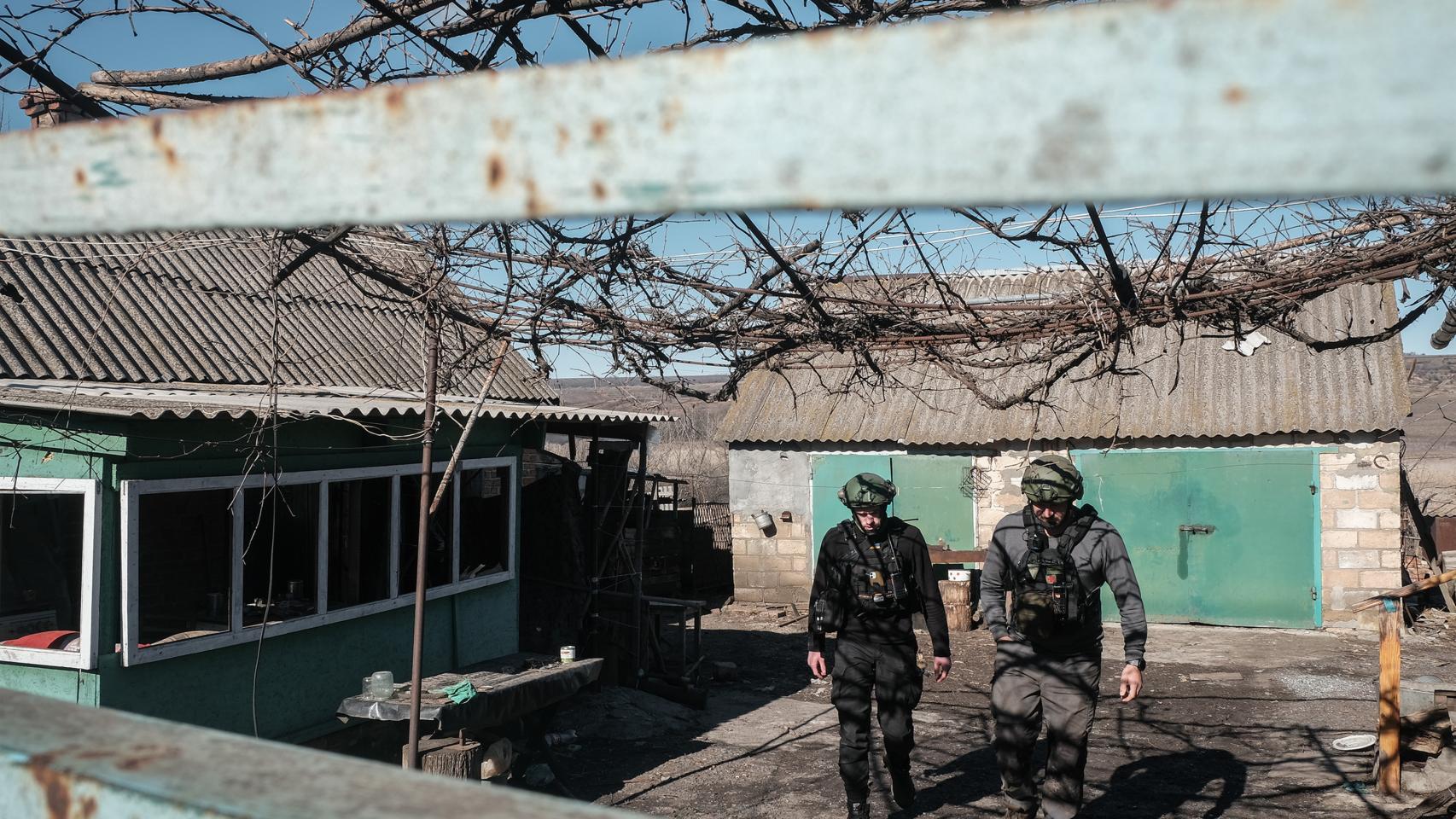The van creaks furiously every time we hit a pothole at full speed on the way to Nykyforivka, a few kilometers from the Russian lines – which are advancing around Bakhmut from the north. The sinkholes are barely visible among the quagmire that covers the roads, and the sound of artillery falling nearby does not allow us to slow down.
In this small town, Sergei and Olga, their daughter Annia – 11 years old – and grandmother Valentina wait to be evacuated. They have resisted until the last moment in their beautiful gray brick house, surrounded by fields and memories. But his house is almost the only one that remains whole in this place: Russian artillery has reduced almost the entire street to rubble. So, finally, they have asked the evacuators for help to get them out of there.
The evacuators are Artem and Michael. A Ukrainian paramedic and an Australian volunteer touring the remotest villages of Donbas offering help to people who have no means to flee on their own. Most do not have a vehicle, others do not have financial support, and many do not even know where to go.
Artem has been doing this job for a year, in which the main frustration is not convincing the families who refuse to leave their home, even if it is under bombs. “Above all, it’s hard to convince older people,” he clarifies.
05_ MARIA SENOVILLA_ evacuators.jpg
Children, the biggest concern
The first time I saw Artem was in a Bakhmut shelter. All the dramas of the war came together in that place. People whose house had been reduced to rubble, mothers who had their sons fighting in a trench, a woman telling her daughter on the phone that her father had been killed in the bombing From the previous night. And despite everything, most did not want to leave the city.
I saw him again at Chasiv Yar, this time with Michael. They walked through the streets of one of the most devastated areas of the city –under the incessant whistle of artillery–, house to house, asking the residents who remained there if they wanted to be taken out of that hell between the bombs.

04_ MARIA SENOVILLA_ evacuators.jpg
“Above all we are concerned about the children who remain in these places”, explains the paramedic. This is also the main motivation for the Australian, “I just can’t stand to see children suffer,” he says. He arrived in Ukraine only three months ago, but he already has experiences that have been burned into his mind.
“I can’t forget a man who lost his wife after refusing to evacuate,” he recalls. But there are also stories of hope“once we rescued a girl who did not speak, she was afraid of everything, but when we left the town she felt safe and began to sing inside the van.”
[Putin no podrá viajar ni sobrevolar 123 países tras la orden de arresto de la Corte Penal Internacional]
Today they are also going to evacuate a girl. However, before picking it up, the two volunteers do not give up and go around the surrounding towns to ask – once again – if any of the residents have changed their minds.
Say goodbye
We walk through several deserted streets, between rubble and cars pierced by shrapnel from projectiles. Let’s go quickly, the sound of artillery is heard nearby. Most of the houses are empty, until we find one in which an older couple lives. They come out to meet us, but the woman comes back in as soon as she hears the word “evacuation.”
Artem and Michael talk with the husband for a long time. They try to convince him that he should get out of there. Russian artillery fire has devoured almost everything around; and the Kremlin Army is barely 7 kilometers from there. “I have my animals here,” the man ends up brandishing, while he points to the dovecote next to the entrance. “There are more animals on the other side, I don’t want to abandon them.”

01_ MARIA SENOVILLA_ evacuators.jpg
Frustration is reflected on the faces of the rescuers, but they do not lose hope that they will be called later. They leave a leaflet with the instructions and the telephone numbers they should call. Sometimes it is the Ukrainian soldiers themselves who contact them if they see a vulnerable family during patrols near the front. Everyone knows the evacuators in this part of Donbass.
After touring the surrounding towns, we arrived at our destination. The family is waiting for us at the door, it seems that they are ready to leave without looking back. But the reality is very different, and when they begin to take out the few belongings they can take with them, tears start to well up in her eyes.
[Rusia ordena duplicar la producción de misiles de alta precisión ante la alerta de escasez de armas]
They have packed their lives into four large bags and a backpack, and they set out to cross the country from east to west, not knowing if they will ever see home again. Grandma Valentina seems the most affected; Michael tries to reassure her, but there is no comfort for her when he finally sees her daughter Olga hers close the metal door and lock it.
Just before getting into the van, Valentina turns and looks at her house for the last time. She lets out a sigh that pierces us all. No one is able to contain the emotion at that momentin which you suddenly understand the drama of the refugees and internally displaced persons who number in the millions in Ukraine as a result of the invasion.
the origin of everything
The forerunner of this rescue team is Ignatius Ivlev-Yorke. Half Russian, half English, this young man was living in Moscow when the full-scale invasion began. He landed in Ukraine on March 8 of last year, as a photojournalist, and when he saw the dimension of what was happening, he decided to stay and help in other ways.
“I saw that there was a great need for people to help people evacuate from places they were bombing. It is true that there were many volunteers, but they did not stay, they were just passing through”.
Since then, together with other volunteers like Artem and Michael, has evacuated more than 4,000 people. High-risk evacuations, in places where hardly anyone arrives. Besieged cities, battle fronts, towns far from the main roads. They go to inaccessible places, and they do it tirelessly, “except when we have to repair our cars, or they break down permanently,” he qualifies.

03_ MARIA SENOVILLA_ evacuators.jpg
The van in which we drove away from Nykyforivka, at full speed, to evacuate Valentina and her family continues to creak with every pothole. But endure the journey to the city of Sloviansk. Annia and her grandmother go hand in hand, while Valentina tries to breathe; I suspect that the little girl is the only reason Valentina has agreed to leave her home.
Arriving at the Sloviansk center for displaced persons, Artem and Michael help them carry the bags – in which they have packed their lives – up to the second floor of the building and make sure the paperwork is correct. There they will spend two days, and then they will continue their journey to Lviv.
The evacuators have fulfilled their mission: the family is safe –as safe as you can be in the middle of a war in which projectiles rain down indiscriminately–. Valentina, Annia, Olga and Serguei will have a chance. They will start from zero again tomorrow, tireless, with a new evacuation.




